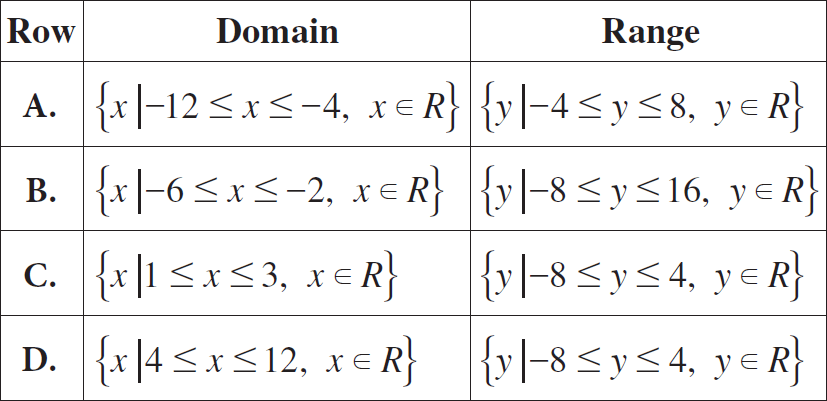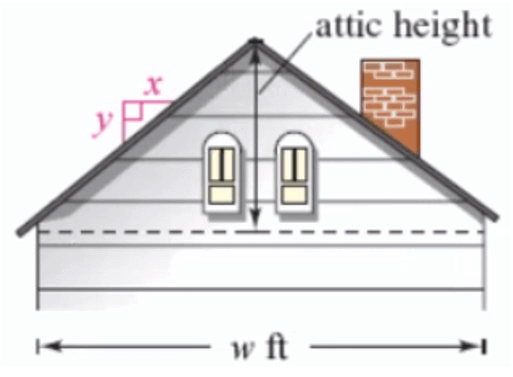HOW TO SHOW THE GIVEN POINTS FORM AN ISOSCELES TRIANGLE OR EQUILATERAL TRIANGLE
Example 1 :
Show that the following points taken in order form an isosceles triangle.
A(5, 4), B(2, 0), C (–2, 3)
Solution :
Distance between two points = √[(x2 - x1)2 + (y2 - y1)2]
= √[(2 - 5)2 + (0 - 4)2]
= √[(-3)2 + (-4)2]
= √(9 + 16)
= √25
AB = 5
B(2, 0), C(–2, 3)
= √[(-2 - 2)2 + (3 - 0)2]
= √[(-4)2 + 32]
= √(16 + 9)
= √25
BC = 5
C(–2, 3) and A(5, 4)
= √[(5 -(-2))2 + (4 - 3)2]
= √[(5+2)2 + 12]
= √(49 + 1)
= √50
CA = 5√2
The sides AB and BC are having equal length. So, it is an isosceles triangle.
Example 2 :
Show that the following points taken in order form an isosceles triangle.
A(6, –4), B(–2, –4), C(2, 10)
Solution :
Distance between two points = √[(x2 - x1)2 + (y2 - y1)2]
A(6, –4), B(–2, –4)
= √[(-2 - 6)2 + (-4 + 4)2]
= √[(-8)2 + (0)2]
= √64
AB = 8
B(–2, –4), C(2,10)
= √[(2 + 2)2 + (10 + 4)2]
= √(42 + 142)
= √(16 + 196)
= √212
BC = 2√53
C(2,10) A(6,–4)
= √[(6 - 2)2 + (-4 - 10)2]
= √[42 + (-14)2]
= √(16 + 196)
= √212
CA = 2√53
The sides BC and CA are having equal length. Hence it is an isosceles triangle.
Example 3 :
Show that the following points taken in order form an equilateral triangle.
A(2, 2), B(–2, –2), C(-2√3, 2√3)
Solution :
A(2, 2), B(–2, –2)
= √[(-2 - 2)2 + (-2 - 2)2]
= √(-4)2 + (-4)2
= √16 + 16
AB = √32
B(–2, –2), C(-2√3, 2√3)
= √[(-2√3 + 2)2 + (2√3 + 2)2]
= √(12 + 4 - 8√3 + 12 + 4 + 8√3)
= √32
BC = √32
C(-2√3, 2√3) and A(2, 2)
= √[(2 + 2√3)2 + (2 - 2√3)2]
= √(12 + 4 + 8√3 + 12 + 4 - 8√3)
= √32
CA = √32
The sides AB, BC and CA are having equal length.Hence it is equilateral triangle.
Example 4 :
Show that the following points taken in order form an equilateral triangle.
A(√3, 2), B(0, 1), C(0, 3)
Solution :
A(√3, 2), B(0, 1)
= √[(0 - √3)2 + (1 - 2)2]
= √[(-√3)2 + (-1)2]
= √(3 + 1)
AB = √4
AB = 2
B (0, 1), C(0, 3)
= √[(0 - 0)2 + (3 - 1)2]
= √4
BC = 2
C (0, 3) and A (√3, 2)
= √[(√3 - 0)2 + (2 - 3)2]
= √(3 + 1)
= √4
CA = 2
The sides AB, BC and CA are having equal length.Hence it is equilateral triangle.
Kindly mail your feedback to v4formath@gmail.com
We always appreciate your feedback.
©All rights reserved. onlinemath4all.com
Recent Articles
-
Precalculus Problems and Solutions (Part - 1)
Feb 15, 25 01:25 PM
Precalculus Problems and Solutions (Part - 1) -
Precalculus Problems and Solutions (Part - 12)
Feb 15, 25 01:18 PM
Precalculus Problems and Solutions (Part - 12) -
Precalculus Problems and Solutions (Part - 11)
Feb 15, 25 01:05 PM
Precalculus Problems and Solutions (Part - 11)

